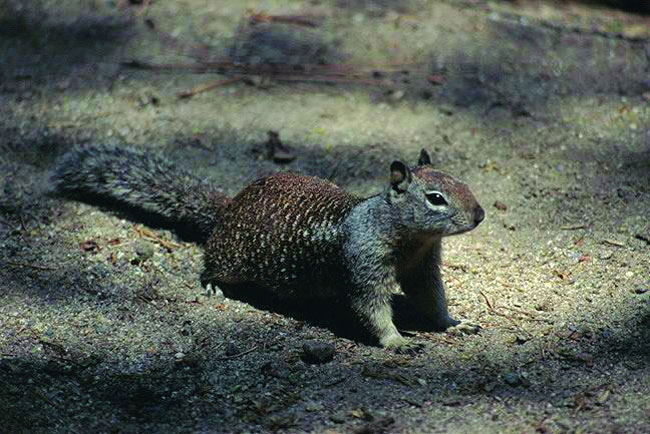Squirrels Heat Tails to Battle Rattlesnakes

To protect their young against rattlesnakes, California ground squirrels have evolved a special defense—they heat their tails.
Squirrels in the wild wave their bushy tails at snakes in order to look bigger and more threatening. This upsizing defense is a common tactic in the animal kingdom—cats puff up their fur for the same reason when alarmed.
Curiously, squirrels wave their tails at rattlesnakes even more vigorously in the dark, when the snakes' eyes cannot see squirrel tails.
Still, rattlesnakes can sense heat or infrared radiation. Behavioral biologist Aaron Rundus at the University of California, Davis, and his colleagues suspected squirrel tails were sending heat signals to rattlesnakes that were invisible to the human eye.
How it works
"One way squirrels regulate their body temperature is through their tails," Rundus explained. "They dump heat to cool down by increasing blood flow through their tails, or reduce blood flow there to keep warm. So there's already a system there where they can manipulate tail temperature."
Using an infrared camera, the researchers filmed encounters between California ground squirrels (Spermophilus beecheyi) and snakes in the laboratory, such as northern Pacific rattlesnakes (Crotalus oreganus) or Pacific gopher snakes (Pituophis melanoleucus).
Sign up for the Live Science daily newsletter now
Get the world’s most fascinating discoveries delivered straight to your inbox.
When facing rattlesnakes, the squirrels waved their tails and turned on the heat, likely by increasing blood flow into their tails and fluffing up the fur there. When engaging gopher snakes, which cannot sense infrared, the squirrels waved their tails, but kept them cool.
"There is this hidden communication system going on," Rundus said. "There's a whole world going on out there that we as humans don't detect, hidden processes that other animals with different perceptual capabilities take advantage of that we have still yet to uncover."
The findings are detailed online today in the Proceedings of the National Academy of Sciences.
Robot squirrel
Rundus and his colleagues also tested rattlesnakes with a stuffed, highly lifelike robotic squirrel model fitted with a heatable tail.
The rattlesnakes were wary of the waving "squirrel-bot" tail, but especially so when it was heated to the same temperature as the tail of a live squirrel confronting a rattlesnake.
In the future, the researchers would like to improve their squirrel-bots enough to take them out into the field and test them in more natural settings, as well as build in other squirrel behaviors, such as sand or gravel tossing.
- Amazing Animal Abilities
- 10 Amazing Things You Didn't Know About Animals
- TOP 10: Secret Weapons










